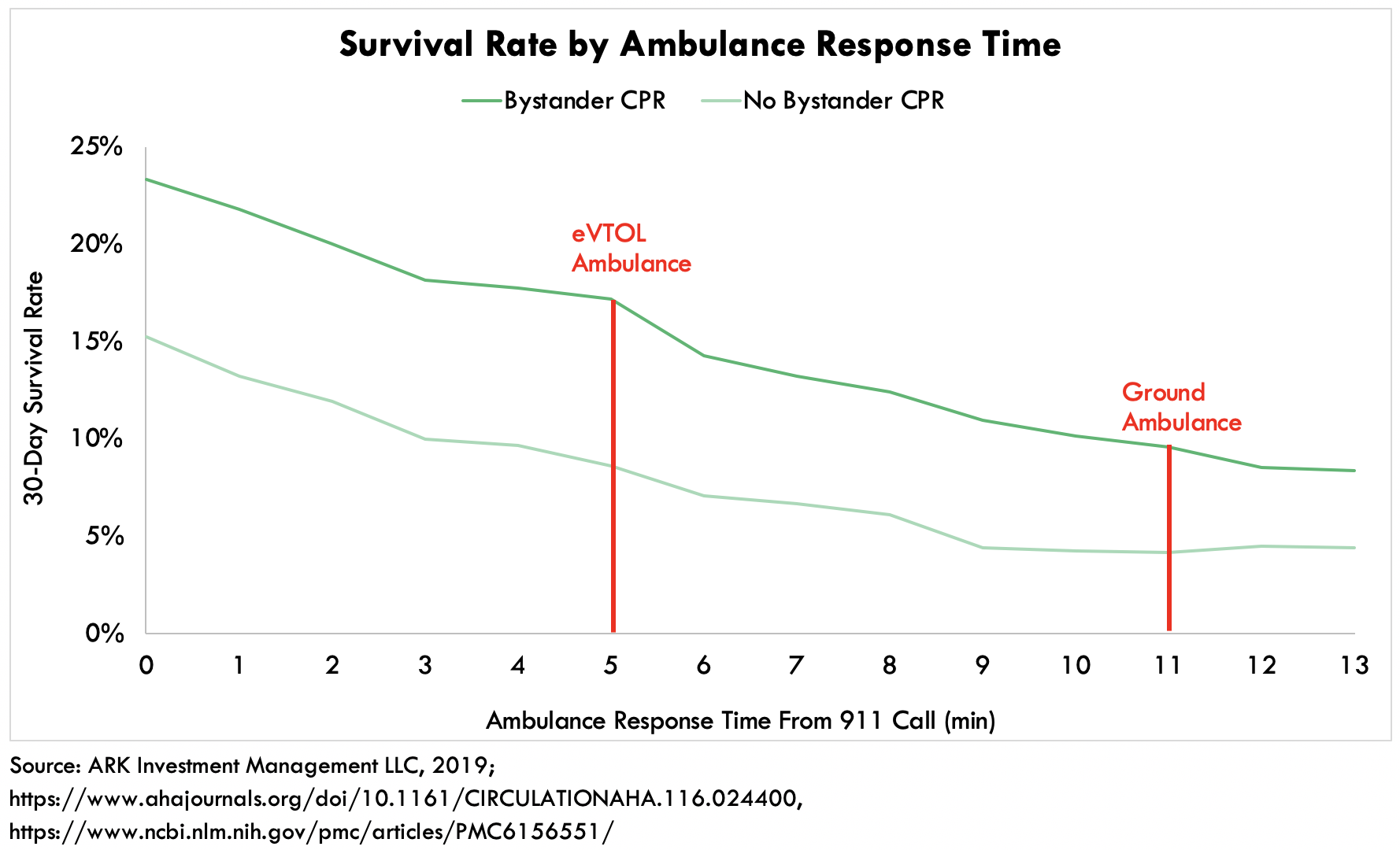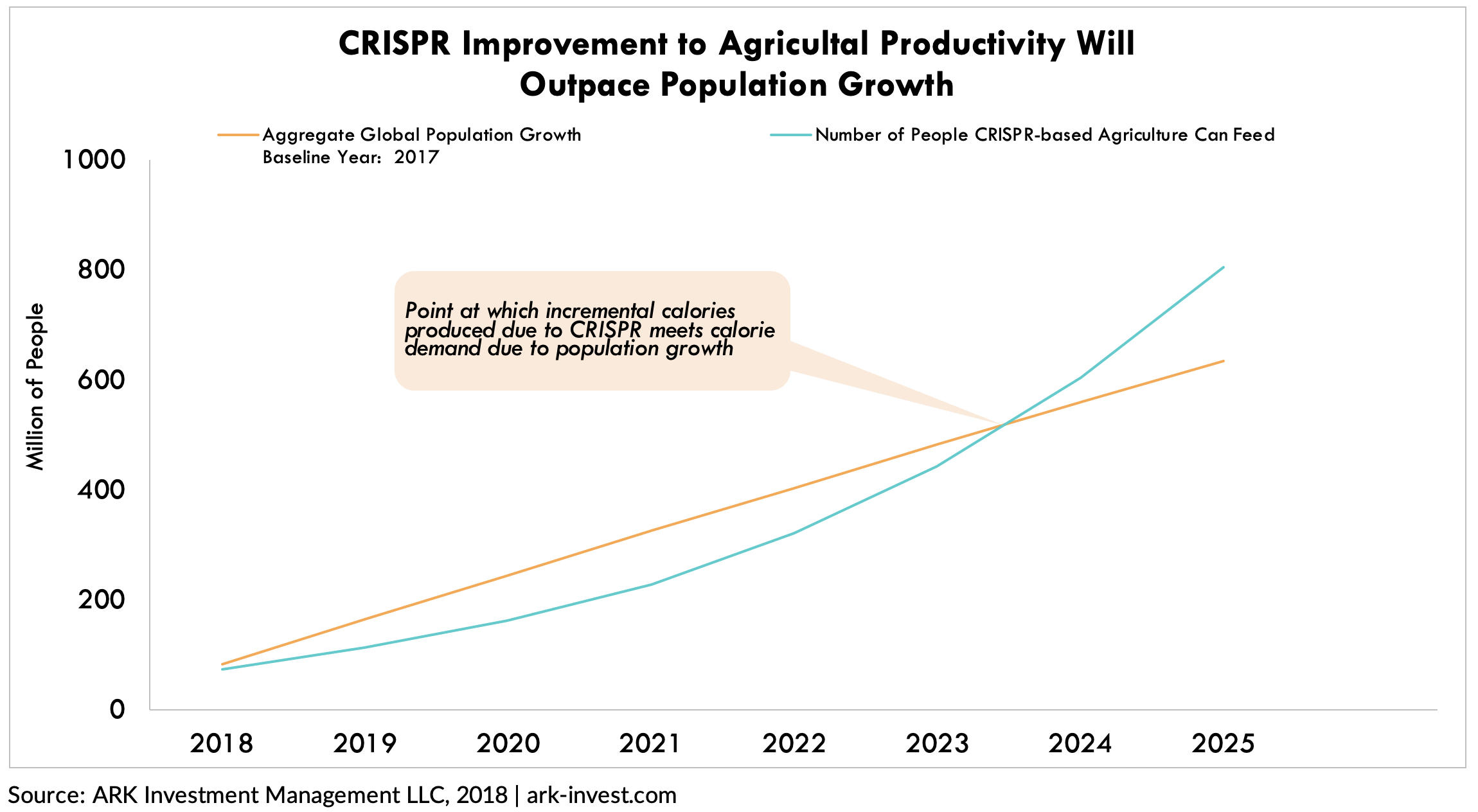
We believe that innovation is changing the way the world works and ultimately making it a better place by saving lives, delivering productivity advancements, empowering users and developers, and reducing the environmental and social externalities of economic growth. Below, we highlight a few examples from our previously published research on how disruptive innovation saves lives.
Deep Learning Is Making Rapid Advances in Diagnostic Radiology
Critical to radiology is medical image diagnosis, a laborious and error prone process. Historically, the average diagnosis error rate among radiologists is around 30%, according to studies dating from 1949 to 1992.[1] Radiologists often miss or misdiagnose lung cancer nodules, as well as 30–70% of breast cancer cases, especially in earlier stages of development. Many times, they do detect breast cancer via mammography but could have diagnosed it earlier upon a second look at prior mammograms.
Radiologists should not be blamed for many of these errors, as radiological images include overlapping tissue, bones, and organs, making it difficult to identify problem areas accurately. Moreover, emergency room radiologists analyze up to 200 cases per day,[2] making it inevitable that some cases will be misdiagnosed.
We think intelligent software has the potential to solve this problem. Thanks to the latest breakthroughs in deep learning—a form of artificial intelligence loosely modeled after the human brain—computers now can recognize images with greater than human level accuracy.[3] While used widely in many consumer Internet applications today, the same technology applied to medical imaging could save many lives.
Read our entire research blog published on December 22, 2016 to learn more about how innovation saves lives.
Drones Could Save the 20,000 Lives Lost to Out-of-Hospital Cardiac Arrest Each Year
Each year in the US, roughly 350,000 cardiac arrests occur outside of hospitals (OHCA), and only 12% of the victims survive. One reason the survival rate is so low is that ambulances take 11 minutes on average [4] to arrive on the scene after a call to 911. While impressive, a shorter response time could save many lives, as shown in the chart below.

Electric vertical take-off and landing drones (eVTOLs) could be the answer to shorter ambulance response times. According to our research, eVTOLs could transport paramedics to patients in 5 minutes on average for just $150 a trip. Then, with help from ground ambulances, they could save as many as 20,000 lives annually.
Learn more about how innovation saves lives by reading Sam Korus’ blog published on August 14, 2019.
CRISPR Technology Could Help Feed the Growing Population
According to the United Nations, the global population will expand from more than 7 billion people today to approximately 9.6 billion, pushing food demand up 70%, by 2050.[5] Not only will existing technologies be unable to meet these food production goals but inefficiencies in supply chain management will exacerbate the problem, preventing what food is produced from reaching hungry consumers. Based on ARK’s research CRISPR technology should help generate enough calories to accommodate global population growth during the next five to ten years.
Currently, the global population is growing at a rate of 1.12%, or 78-83 million people per year, pointing to an increase of 630 million people who will require roughly 460 trillion calories to satisfy the FDA’s guideline of 2,000 calories per day, between 2017 and 2025.[6] According to our calculations, CRISPR will be able to boost overall calories available for global consumption by 6%, exceeding the number necessary for 630 million people by 27%. Indeed, as illustrated below, CRISPR should boost agricultural productivity at a rate faster than population growth over time.

Read our white paper “CRISPR Genome-Editing: Market Opportunity and Key Players” published on August 20, 2018 to learn more about how innovation saves lives.
Autonomous Vehicles Will Reduce the Chances of Dying in an Auto Accident by Over 80%
While the autonomous vehicle market is still in its infancy today, we believe in the next decade autonomous vehicle safety will be a main reason for fast consumer adoption.
Every year automobiles claim more than 1.4 million lives at an economic cost of hundreds of billions of dollars.[7] ARK has quantified the expected magnitude of autonomous vehicles’ safety-advance by analyzing the introduction of another automation technology that has saved tens of thousands of lives: the airline’s autopilot. If autonomous vehicles provide a similar edge in safety, the introduction of the autonomous car could be one of the great public health advances in history. ARK believes that autonomous technology platform providers and active safety integrators will drive this movement forward.
We believe that innovations from Google (GOOG), Tesla (TSLA), Autoliv (ALV), Delphi (DLPH), and Mobileye (MBLY) will help shape a future with fewer auto accidents. Fully autonomous vehicle platforms from Google and Tesla are expected by 2020. These systems could be used for autonomous taxis that could cost as little as $0.25 per mile and tap a $450 billion market opportunity. On the more immediate horizon, Mobileye, Autoliv, and Delphi already are developing and packaging autonomous vehicle safety features. The global market for collision avoidance and driver assistance is currently $14 billion and expected to grow at 25% per year as semi-autonomous features become increasingly common in new vehicles. There are over one billion vehicles in the world and active safety and autonomous technology providers can help make these machines more than 80% safer.
For more details on how innovation saves lives, read the full research article by Tasha Keeney, published on August 18, 2015.

 Actively Managed Equity
Actively Managed Equity Overview: All Strategies
Overview: All Strategies Investor Resources
Investor Resources Indexed Equity
Indexed Equity Private Equity
Private Equity Digital Assets
Digital Assets Invest In The Future Today
Invest In The Future Today
 Take Advantage Of Market Inefficiencies
Take Advantage Of Market Inefficiencies
 Make The World A Better Place
Make The World A Better Place
 Articles
Articles Podcasts
Podcasts White Papers
White Papers Newsletters
Newsletters Videos
Videos Big Ideas 2024
Big Ideas 2024


